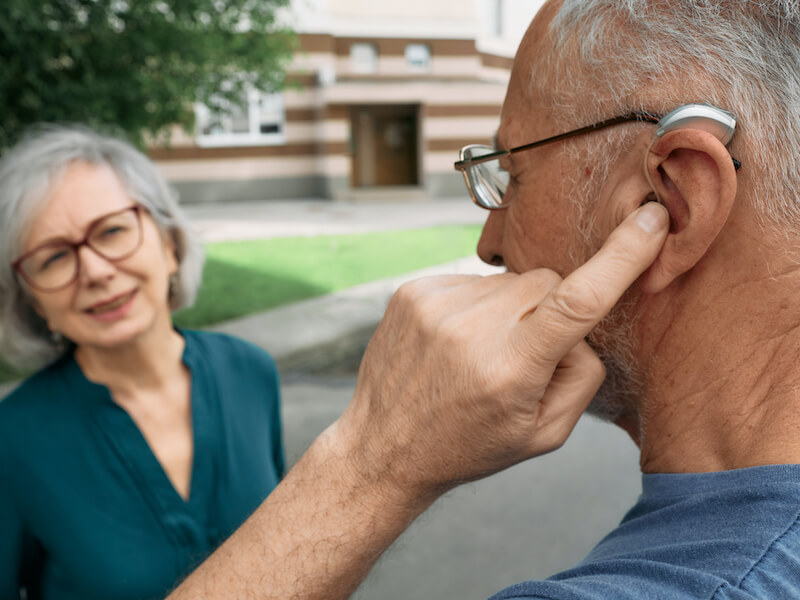
Have you ever been watching your favorite Netflix movie when your internet abruptly disappears? You sit and watch that spinning circle instead of learning about who won that cooking competition. And so you just wait. Is it your internet provider, modem, router, or maybe it will simply come back on its own? It’s not a very good feeling.
Technology can be enormously frustrating when it doesn’t work properly. The same is definitely true of your hearing aids. The majority of the time, your hearing aids will give you the means to stay connected to loved ones, have conversations with co-workers, and keep up with your neighbors.
But your symptoms of hearing loss can suddenly become extremely frustrating when your hearing aids quit working. You’ve been let down by the technology you count on. How do hearing aids just quit working? So how do you cope with that? Well, there are three common ways that hearing aids can fail, here’s how you can begin to recognize and troubleshoot those problems.
Three common issues with hearing aids (and some possible solutions)
Even though hearing aids are complex technology, individuals may encounter three common issues with them. Let’s have a look at possible causes of these issues and potential fixes.
Whistling and feedback
So, maybe you’re attempting to have a chat with your family or watch your favorite show and you begin to hear a dreadful whistling sound. Or perhaps you detect a bit of feedback. You start to think, “this is weird, what’s up with this whistling”?
Here are three possible issues that could be causing this whistling and feedback:
- Your hearing aids might not be sitting in your ears correctly. Try to take them out and re-seat them. You can also try turning the volume down (if this works, you may find some short-term relief, but it also likely means that the fit isn’t quite right and you should speak with us about it).
- The tubing that attaches the hearing aid with the earmold, on behind-the-ear models, can occasionally become compromised. Have a close look to see if the tube may have detached or may be damaged somehow.
- Earwax accumulation in your ear canal can compromise the way your hearing aid works. This is a rather common one. That includes causing your hearing aids to whistle or feedback. If possible, you can attempt to clean some earwax out of your ear or consult with us about the best method to do that (do not use a cotton swab).
If these problems are not easily resolved, it’s worth consulting with us about correcting the fit or sending your device in for maintenance (depending on what we think the underlying cause of that whistling or feedback might be).
Hearing aids not producing sound
The main purpose of hearing aids is to generate sound. That’s their primary function! Something has undoubtedly gone wrong if you can’t hear any sound coming out of your hearing aid. So what could be the cause when hearing aids work but no sound comes through? Here are some things to look for:
- Your settings: If you have them, cycle through your custom settings. It’s possible your hearing devices are on the wrong custom setting (so perhaps your hearing aids think you’re in a gymnasium instead of around the kitchen table). This incorrect setting could throw off the sound you’re hearing.
- Earwax buildup: Here we go again with the earwax! Take a close look to see if you discover any earwax on the microphone or speakers. You want to make certain the device is good and clean.
- Power: Look, we’ve all forgotten to turn on the hearing aid before. Check for this first. Then you can cross that of the list of possible issues.
- Batteries: Make sure your batteries are completely charged. And even rechargeable batteries should be switched out once in a while.
We’re here for you if these measures don’t clear up your issues. Whether repair, maintenance, or replacement is your next step, we will be able to help you figure that out.
Painful ears when you’re wearing your hearing aids
Maybe your hearing aids are fine functionally but they hurt when you put them in. And you’re likely wondering why your hearing aids would hurt your ears. You’re not as likely to use your hearing aids every day if they make your ears hurt. So, what could be causing it?
- Time: Sometimes, it just takes some time to get accustomed to your hearing aids. How long will depend on the person. When you first get your new hearing aids, we can help you get a realistic concept of the adjustment period you can anticipate. If uncomfortable ears persist, talk to us about that too!
- Fit: The most obvious problem can be the fit. After all, most hearing aids work best when they fit tightly. Which means that there can sometimes be discomfort involved in a poor fit. Some models of hearing aid can be fit to the particular shape of your ears. Over the long haul, you will have fewer problems if you have a tight fit. We will be able to help you get the best possible fit from your devices.
Take your new hearing aid out for a test ride
One of the best ways to prevent possible problems with hearing aids is to take them for a bit of a test drive before you commit. Most of the time we will have loaner pairs for you to try out before you make a decision.
In fact, we can help you identify the best kind of hearing aid for your requirements, adjust the fit to match your ears, and help you take care of any ongoing problems you might have with your devices. In other words, when your devices quit working, you’ll have a resource that can help!
And that’s a lot more than you will get from an over-the-counter hearing aid!